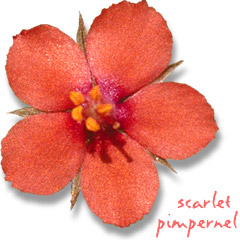The Primrose Family
 |
 |
| Cyclamen persicum spp. |
Anagallis arvensis spp. |
The Primulaceae has about 28 genera (11 in the U.S.) and nearly 1,000 species in all. The family occurs throughout the temperate regions of the world, but is most abundant in the northern
hemisphere. The plants are herbaceous and usually perennial while some are annual and are generally known for their showy flowers.
Click here for a distribution map of the Primulaceae in the U.S.A.
Vegetative Characters | Reproductive Characters |
Diagnostic Characters | Economic Importance/Fun Facts
| Evolutionary Adaptations and Relationships | Glossary of Terms |
References and Links | Pictures
- Leaves usually opposite, basal or whorled, simple, exstipulate, sometimes with
glandular hairs on leaves and stem
- Plants generally herbacious and monoecious/synoecious
- Flower symmetry radial or actinomorphic
- Flowers subtended by bracts
- Flowers maybe singular or in racemes, with cuplike or tubular corollas
and calyx that have 5 well developed lobes
- Perianth usually has distinct calyx and corolla
- The 5 stamens are epiptetalous
Back to top
- Plants reproduce throught pollination and are entomophilous
- Androecium is opposite the petals
- Gynoecium is syncarpous
- Ovary is superior and hypogynous with free central placentation
- Fruit is a non-fleshy, usually dehiscent capule
- Seedling germination phanerocotylar
Back to top
- Calyx, corolla, androecium, and carpels in groups of 5 (5-merous)
- Leaves without persistant basal meristem
- Stem nodes are unilacunar
- Carpels are often difficult to discern because the ovary has only one
locule and free central placentation
- Most species perennate by means of rhizomes (Primula) or tubers (Cyclamen)
Back to top
- Primarily used ornamentally
- Some members of the family are poisonous (Cyclamen purpurascens) and a few have medicinal properties
- Lysimachia provides a yellow dye
- Flowers of Primula veris can be used to make home-made wine
Back to top
- Primulaceae is a monophyletic group supported by morphological characteristics
- The genera are divided into several tribes based on floral symmetry, ovary position,
and aestivation of the corolla
- The Primulaceae was once considered to be related to the Caryophyllaceae
based on the nature of the gynoecium and other anatomical features.
- Advances such as fusion of the corollaand reduction of androecium has since separated
the Primulaceae from Caryophyllaceae two and related it to Ebenales
Back to top
- Dehiscent - to split open
- Entomophilous - pollination by insects
- Meristem - region of tissue actively involved in cell division
- Phanerocotylar - cotyledons emergent from seed and usually appearing above ground
- Perenate - maintain a dormant state through the non-growing season
- unilacunar - having only one gap or space enclosed by but free from veins
Back to top
- http://plants.montara.com/ListPages/FamPages/Primula.htm
- http://biodiversity.uno.edu/delta/angio/www/primulac.htm
- http://www.arctic.uoguelph.ca/cpl/organisms/plants/Marine/primrose.htm
- http://www.fornau.edu/azproject/Family/pri0.html
- http://herbarium.usu.edu/families/primulaceae.html
Back to top
 |
 |
| Primula vulgaris spp. |
Trientalis borealis spp. |
 |
 |
| Primula japonica spp. |
Anagallis arvensis spp. |

Back to top
For questions or feedback, contact:
Kris Hamwi







